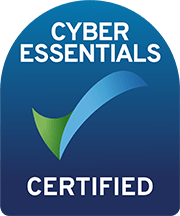Guidance to help Britons safely back to work
New ‘COVID-19 secure’ guidelines are available to UK employers to help them get their businesses back up and running and workplaces operating as safely as possible.
The new guidance covers 8 workplace settings which are allowed to be open, from outdoor environments and construction sites to factories and takeaways. The 8 workplace settings have been classed as follows:
Construction and other outdoor work:
This guidance is for working outdoors including many people in construction, energy and utilities, farming and agriculture (including seasonal labour), forestry, waste management and other infrastructure, railway services and street and highway services.
Factories, plants and warehouses:
This guidance is for factories, plants and warehouses including the industrial environments such as manufacturing and chemical plants, food and other large processing plants, warehouses, distribution centres and port operations.
Labs and research facilities:
This guidance is for indoor research environments such as engineering centres, clean rooms, prototyping centres, wet labs, wind tunnels, computer labs, simulators, material development labs and specialist testing rooms.
https://www.gov.uk/guidance/working-safely-during-coronavirus-covid-19/labs-and-research-facilities
Office and contact centres:
This guidance is for indoor environments such as offices, contact centres and operational rooms.
https://www.gov.uk/guidance/working-safely-during-coronavirus-covid-19/offices-and-contact-centres
Other people’s homes:
The guidance acknowledges that there is a complex environment due to the varied employment relationships, including the self-employed, employers, and agencies. This guidance applies to those working in, visiting or delivering to home environments. These includes, but are not limited to, people working in the following areas:
- In home workers such as repair services, fitters, meter readers, plumbers, cleaners, cooks and surveyors. However this is not an exhaustive list
- To home services such as delivery drivers momentarily at the door
This guidance does not directly apply to nannies who spend all their time with one household, or to their employers.
https://www.gov.uk/guidance/working-safely-during-coronavirus-covid-19/homes
Restaurants offering takeaway or delivery:
This guidance applies to any food preparation or food service setting where food is sold for takeaway or delivery. For example:
- bars
- pubs and restaurants operating as take-aways
- cafes
- food to go
- food delivery
- takeaways and mobile catering
- contract catering at the point of service to the consumer, such as in offices or similar environments
It also applies to the food services provided by businesses. It does not apply to food preparation or food service in clinical or healthcare settings.
Shops and branches:
This guidance is for shops including non-food stores, fashion stores and other types of retail that are currently closed. This guidance will help them consider what their operations may need to look like when they are allowed to open.
This guidance also covers shops that are currently open, such as shops selling food and chemists.
Branches include bank branches and other open money businesses.
https://www.gov.uk/guidance/working-safely-during-coronavirus-covid-19/shops-and-branches
Vehicles:
This guidance is for people who work in or from vehicles, including couriers, mobile workers, lorry drivers, on-site transit and work vehicles, field forces and similar.
https://www.gov.uk/guidance/working-safely-during-coronavirus-covid-19/vehicles
Each guidance sets out practical steps for each type of workplace as per the above classification, which focuses on 5 key points, which should be implemented as soon as it is practical:
1. Work from home, if you can
All reasonable steps should be taken by employers to help people work from home. But for those who cannot work from home and whose workplace has not been told to close, our message is clear: you should go to work. Staff should speak to their employer about when their workplace will open.
2. Carry out a COVID-19 risk assessment, in consultation with workers or trade unions
This guidance operates within current health and safety employment and equalities legislation and employers will need to carry out COVID-19 risk assessments in consultation with their workers or trade unions, to establish what guidelines to put in place. If possible, employers should publish the results of their risk assessments on their website and we expect all businesses with over 50 employees to do so.
3. Maintain 2 metres social distancing, wherever possible
Employers should re-design workspaces to maintain 2 metre distances between people by staggering start times, creating one way walk-throughs, opening more entrances and exits, or changing seating layouts in break rooms.
4. Where people cannot be 2 metres apart, manage transmission risk
Employers should look into putting barriers in shared spaces, creating workplace shift patterns or fixed teams minimising the number of people in contact with one another, or ensuring colleagues are facing away from each other.
5. Reinforcing cleaning processes
Workplaces should be cleaned more frequently, paying close attention to high-contact objects like door handles and keyboards. Employers should provide handwashing facilities or hand sanitisers at entry and exit points.
We are ourselves issuing regular updates via our website and e-mail cannons. If you are not receiving these and would like to be added to the list please e-mail [email protected] with the subject “Add me to your COVID-19 e-mails”.


